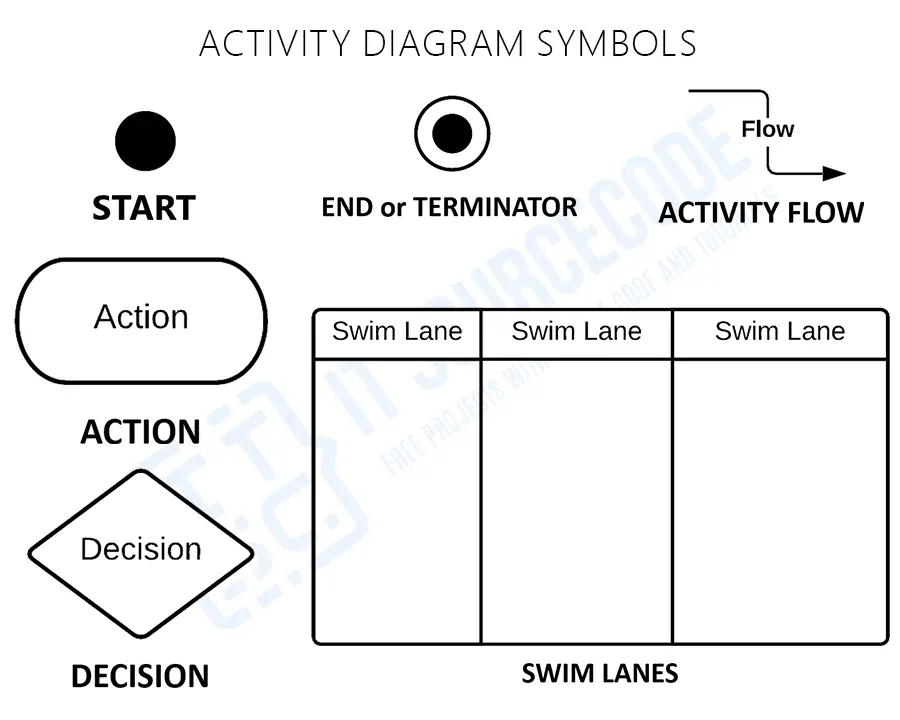Employee Management System Activity Diagram – A system’s development is aided by an activity diagram for personnel management. It displays how the employee management system acts when interacting with its users or clients.
The Employee Management System UML Activity Diagram gives programmers great ideas and tells them what to accomplish.
Employees and business owners are key users in developing an activity diagram for an employee management system. Knowing who will use the system will help you build its interactions and activities.
The system’s conduct toward its users will then be predictable to you. So, you should keep in mind that your system should be easy for people to use and work well.
What is a Employee Management System Activity Diagram?
Let me explain its function and function to you so that you will understand it clearly. The Employee Management System activity diagram helps programmers approach users.
This occurs because the activity diagram directs the programmer to develop the software’s essential features. Therefore, you must also finish the activity diagram if you want friendly, useful, or easy to use software.
You can determine how the employee management system and its users should interact using an activity diagram.
By evaluating the system’s activity diagram, your readers and users will also be guided as to how they should use it. To describe how the personnel management system should work, use a UML activity diagram.
Activity Diagram Symbols:
You must first be familiar with the symbols used to build the Employee Management System Activity Diagram before we can begin. The symbols used in the activity diagram are listed below.

To identify what belongs in the illustration and prevent mistake, you must be familiar with these symbols. You’ll learn activity diagram symbols so you and users can understand the system.
Knowing these activity diagram symbols can help you illustrate the system’s components and interactions. This idea then gives you the ability to come up with the best plans for creating the system you need.
Additional Knowledge
The activity diagram fits in perfectly with the other UML diagrams that were already available on our website. They include the Data Flow Diagram, Entity Relationship Diagram, and the Employee Management System Use Case Diagram, among many others.
Activity Diagram of Employee Management System
You’ll see the provided Activity Diagram for the Employee Management System below. It demonstrates how the system would communicate with both the employee and the business process owner.
The interactions described here are based on the regular flow of activities of employee management.
Designed Activity Diagram for Employee Management System
You must design this activity diagram to illustrate its fundamental purpose and the procedure through which the exchange of actions or activities occurs.

It is created with both company owners and employees in mind. It provides more specific information about how the system and its users interact. This design shows readers or users that only authorized employees can access important transaction records.
You should be aware that the diagram can be changed to provide the control flow you want. Additionally, you can develop a special system function to support each of your clients’ requirements.
You can also duplicate all of the concepts discussed here if you don’t want to come up with any new ones.
If you want to make your activity diagram more general, you can also combine it with other diagrams. You must be specific so readers and users may comprehend how an employee management system works.
Conclusion
You must be familiar with the diagrams that were used to plan and create the Employee Management System. This is because a system cannot be perfectly designed or function properly without it.
By drawing an activity diagram, you’ll know the system’s inputs and situations. Additionally, you will identify the required procedures and link them to the other UML diagrams.
You can quickly create the system you want by finishing the Activity Diagrams for each module or procedure.
Related Articles
For more knowledge and information, see our related and suggested articles.
- Employee Management System UML Diagrams
- Employee Management System Sequence Diagram
- Component Diagram for Employee Management System
- Employee Management System ER Diagram
- Employee Management System Project Report (PDF)
Inquiries:
What have you discovered as a result of our talk, then? Have you decided on the diagrams you need to design? What project are you considering?
And if you have ideas or concerns with our discussion, do not hesitate to leave us your suggestions and questions. Those are highly appreciated. Thank you so much and have a good day!

